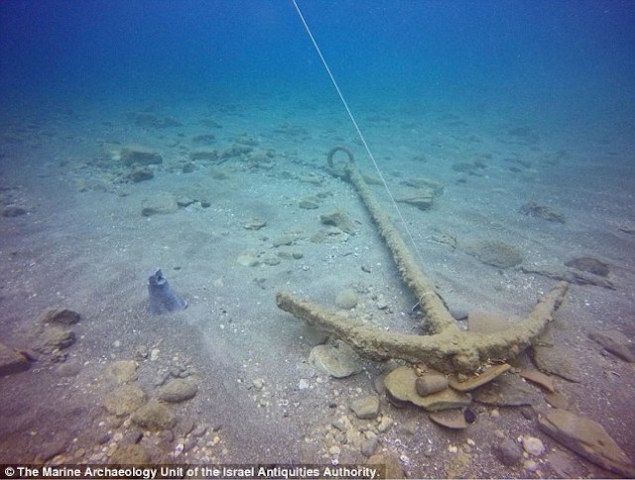A ship's cargo, which includes huge marble items from 1800 years ago during Roman rule in Israel was discovered in the shallow waters off Yanai beach in Israel, about 200 m from the shore. This is the first cargo of its kind known in the Eastern Mediterranean, which includes Corinthian column caps decorated in a plant motif, caps in a raw state that were partially carved, and huge marble column beams, up to 6 m long. It seems that the valuable items were intended for the construction of a magnificent public building, a temple, or perhaps a theater.
A few weeks ago, Gideon Harris, a sea swimmer, contacted the Israeli Antiquities Authority and reported about ancient columns he saw while swimming at Yanai Beach. Director of the Marine Archeology Unit at the Antiquities Authority, Kobi Sharvit said: "We have known about the existence of this cargo for many years. However, since it was covered in sand, its exact location was unknown, and it could not be investigated. The recent storms revealed, apparently, the ruins, and following Gideon's important report, we documented it, and conducted preliminary archaeological tests on it, in preparation for a wider study."
The 1,600 YEAR OLD ROMAN SHIP DISCOVERED IN CAESARIA HARBOR
— Dr. Haim Cohen دكتور حاييم كوهين (@Haim44) April 11, 2023
An underwater salvage survey discovered numerous artifacts that had been part of the ship's cargo.
The artifacts are made of bronze and are in an extraordinary state of preservation. Follow and 🔄
#archaeology #israel pic.twitter.com/Sjhg7ZowOB
From the position of the cargo on the seabed, it can be concluded that it was a ship that was wrecked on the spot, apparently, after the ship's crew encountered a storm in the shallow waters, and dropped anchor in a desperate attempt to prevent it from drifting away. "Such storms develop quickly on the coasts of this country," says Sharvit, "and due to the limitations of the ships' maneuverability, this results, more than once, in their drifting and drowning in the shallow waters."
"From the size of the items, you can learn about the width of the ship and its size; it was a large merchant ship, which could have carried at least 200 tons," Kobi adds. "Such items characterize a large and magnificent public building. Just for the sake of example, even in Roman Caesarea, the items were made of local stone covered with white plaster to give the buildings a marble appearance. Here, these are real marble items."
Since the cargo seems to have originated in the Aegean region either in Turkey or Greece, and the cargo was discovered south of the port of Caesarea, it seems that it was planned to reach one of the southern port cities, Ashkelon or Gaza, or perhaps even Alexandria in Egypt.
An ancient Roman-era cargo shipment of marble was found by a local beachgoer off the coast of Israel's Yanai beach in what is the first discovery of its kind in the Eastern Mediterranean.#Israel | #Archaeology | #Roman https://t.co/uTPcArWeqL
— The Jerusalem Post (@Jerusalem_Post) May 15, 2023
According to Sharvit, Gideon's report resolved a long-standing research debate: "The archaeologists from the land and the sea argue among themselves, on the question of whether the items in the Roman period were already designed in the countries of origin, or whether they traveled as partially shaped raw material and their final design was carried out at the construction site in the destination country. This cargo solves the mystery; it seems that most of the items came out of the quarry as raw materials, and underwent a final design by local artists or artisans who were brought to do this from other countries, similar to the mosaic artists who wandered from site to site by order."


